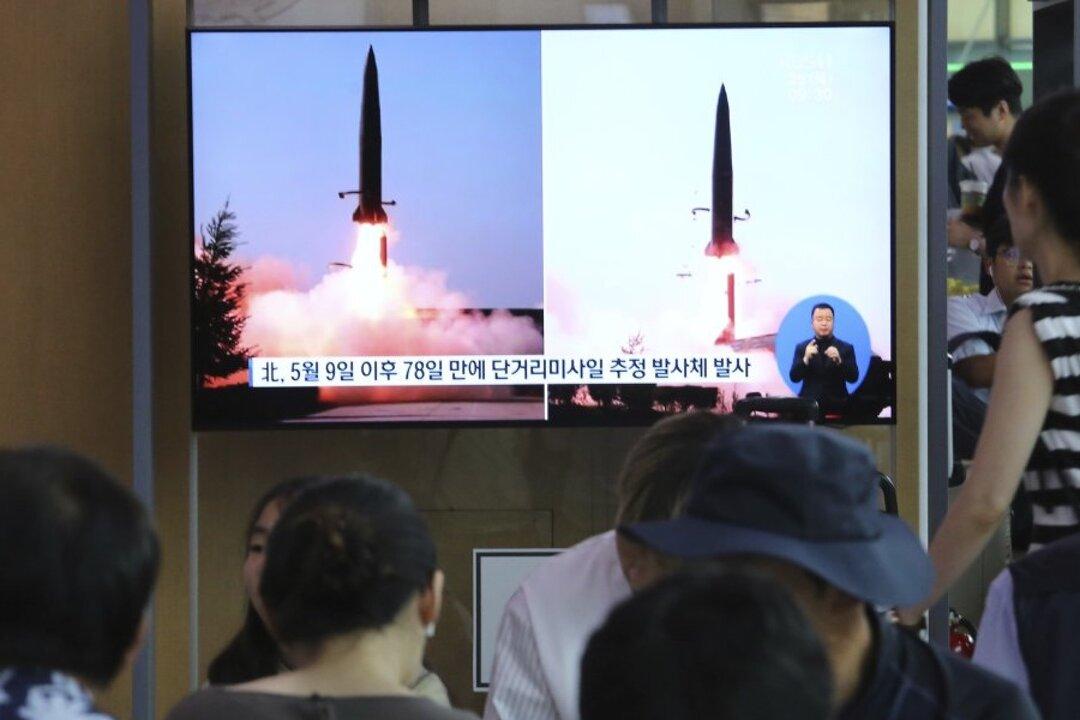North Korea launched two new types of short-range ballistic missiles into the sea on July 25 and a senior defense researcher at a public policy community said it is Pyongyang’s attempt to pressurize the White House.
The missiles were fired from near the eastern coastal town of Wonsan, with one flying roughly 270 miles and the other 430 miles before splashing into the Sea of Japan off the coast of North Korea, according to South Korea’s Joint Chiefs of Staff.





